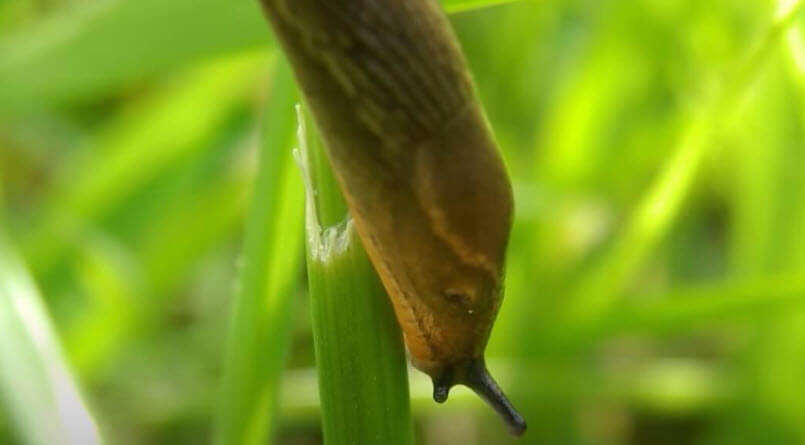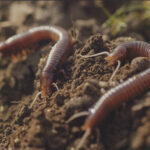Table of Contents
The Control of Slugs in UK Gardens: Organic and Non-Organic Methods, Pros and Cons
Slugs can be a persistent nuisance in UK gardens, wreaking havoc on plants and frustrating gardeners. Whether you prefer an organic approach or are open to non-organic methods, there are various strategies you can employ to control them effectively. In this comprehensive guide, we will explore the different methods available, weigh their pros and cons, and provide practical tips to help you keep your garden free of these slimy invaders.
Gardeners often face the challenge of controlling these pests, which can cause significant damage to plants and crops. Infestations can decimate flowerbeds, vegetable patches, and ornamental gardens, leaving frustrated gardeners searching for effective solutions. Fortunately, there are both organic and non-organic methods available, each with its own set of advantages and disadvantages.
My personal favourite method:
This organic method involves the clever technique of using an upturned flower pot to effectively attract and catch slugs. Here’s how it works:
Select the right flower pot: Choose a medium-sized or large flower pot with a wide mouth and no drainage holes at the bottom (or cover up the drainage hole). The pot should be deep enough to accommodate your guests.
Find a suitable spot: Identify an area in your garden where slug activity is prevalent or where your plants are most vulnerable to damage. This can be near flowerbeds, vegetable patches, or other areas of concern.
Prepare the ground: Dig a hole in the ground that is slightly larger and deeper than the flower pot. Make sure the hole is stable and the pot can sit securely in it without tipping over.
Position the flower pot: Place the flower pot upside down in the hole, ensuring that the rim of the pot is level with or slightly above the ground surface. This allows slugs to easily access the trap.
Create a slug-friendly environment: They are attracted to dark and moist places, so enhance the appeal of the trap by creating favorable conditions. You can scatter some moist leaves or a bit of damp soil around the area to make it more enticing for slugs to investigate.
Check and empty the trap: Regularly inspect the flower pot trap, especially in the early morning or late evening when slugs are most active. Lift the pot carefully, and you will likely find them taking shelter beneath it. Collect the slugs and dispose of them as you see fit. You can release them far away from your garden or use methods that align with your gardening practices.
Maintain the trap: Keep the trap clean and functional by removing captured slugs and any debris that may accumulate inside the pot. Rinse the pot with water and periodically reposition it in different areas of your garden to target slug hotspots.
The upturned flower pot trap capitalizes on slugs’ affinity for moist and sheltered spaces. Slugs crawl into the trap seeking refuge but become trapped due to the steep sides of the pot, preventing their escape. This method offers a non-toxic and environmentally friendly approach to slug control.

Remember, using the flower pot trap is just one aspect of an integrated slug control strategy. It’s beneficial to combine it with other methods like handpicking, creating slug-resistant barriers, encouraging natural predators, or employing organic deterrents for comprehensive slug management.
By employing this technique alongside other slug control practices, gardeners can effectively target and capture slugs, helping to safeguard their cherished plants and maintain a thriving garden.
Organic Methods for Slug Control
1. Encourage Natural Predators
One of the most natural and eco-friendly ways to control slugs is to attract their natural predators to your garden. Creatures like hedgehogs, frogs, toads, and birds are all known to have a voracious appetite for slugs. By creating a welcoming environment for these beneficial creatures, you can establish a natural balance and reduce the slug population in your garden.
2. Beer Traps
Beer traps are a popular organic method for trapping and killing slugs. Slugs are attracted to the yeast in beer, and by setting up shallow containers filled with beer, you can lure the slugs in. They will crawl into the containers and drown in the beer. Regularly empty and refill the traps to maintain their effectiveness.
3. Copper Barriers
Copper barriers are a physical deterrent that can prevent slugs from reaching your plants. Slugs dislike the electric charge that is created when their slime comes into contact with copper, so they will avoid crossing it. Place copper strips or tape around the perimeter of flowerbeds or containers to create a protective barrier.
4. Coffee Grounds
Coffee grounds are a readily available and effective organic remedy for repelling slugs. Spread a layer of coffee grounds around vulnerable plants, and the slugs will be deterred by the rough texture and the caffeine content, which is toxic to them. Plus, coffee grounds can enrich the soil as they break down.
Here is a great video showing a test carried out using coffee grounds.
5. Diatomaceous Earth
Diatomaceous earth is a natural product made from fossilized algae. It is abrasive to slugs but harmless to humans and pets. When slugs come into contact with diatomaceous earth, it dehydrates their bodies and causes them to perish. Apply a thin layer of diatomaceous earth around plants to create a protective barrier.
6. Nematodes
Nematodes are microscopic worms that can be used to control slugs organically. These beneficial worms release bacteria into the slugs, leading to their demise. Nematodes are available in commercial formulations that can be mixed with water and applied to the soil. They are harmless to plants, humans, and pets.
Non-Organic Methods for Slug Control
1. Slug Pellets
Slug pellets are a common and widely available non-organic method for slug control. These pellets contain chemicals such as metaldehyde or ferric phosphate, which are toxic to slugs. When the slugs consume the pellets, they are killed. It is important to follow the instructions carefully and keep slug pellets out of reach of children and pets.
2. Slug Traps
Slug traps are another non-organic option for controlling slugs. These traps typically consist of a container filled with bait, such as a mixture of water and pet food or commercial slug attractants. The slugs are attracted to the bait and fall into the trap, where they drown. Regularly empty and clean the traps to maintain their effectiveness.
3. Chemical Slug Control
Chemical slug control involves the use of pesticides specifically formulated to kill slugs. These pesticides often contain metaldehyde or other chemicals that are toxic to slugs. They can be applied directly to the soil or sprayed onto plants. It’s important to carefully read and follow the instructions on the pesticide label and take precautions to minimize harm to beneficial insects, wildlife, and the environment.
4. Physical Barriers
Physical barriers, such as slug collars or cloches, can be employed to protect individual plants from slug damage. These barriers create a physical obstacle that slugs cannot crawl over. Slug collars are typically made from materials like plastic or copper and are placed around the base of vulnerable plants, while cloches are protective covers that are placed over individual plants or rows.
5. Handpicking
Although not the most pleasant task, handpicking slugs can be an effective non-organic method, especially in smaller gardens. Simply go out at night with a flashlight and collect the slugs by hand. Dispose of them in a bucket of soapy water or relocate them away from your garden. Regular patrols may be necessary to stay on top of the slug population.
6. Electric Slug Fences
Electric slug fences provide a physical and electric shock deterrent to keep slugs out of specific areas. These fences emit a low electric charge that repels slugs when they come into contact with it. They are particularly useful for protecting vegetable patches or specific garden areas. Be sure to install and use electric fences safely and according to manufacturer guidelines.
Pros and Cons of Organic and Non-Organic Slug Control Methods
Now that we’ve explored both organic and non-organic methods for slug control, let’s discuss the pros and cons of each approach.
Organic Slug Control Methods: Pros and Cons
Pros:
- Environmentally friendly: Organic methods are generally safer for the environment and beneficial to insects, and wildlife.
- Non-toxic to humans and pets: Organic slug control methods typically use natural substances that pose no harm to humans or pets.
- Sustainable: Many organic methods focus on long-term solutions that promote ecosystem balance and reduce reliance on chemicals.
- Safer for edible crops: Organic methods are often the preferred choice for gardens growing edible crops, as they avoid potential chemical residues.
Cons:
- Slower results: Organic slug control methods may take longer to show noticeable effects compared to non-organic methods.
- Limited effectiveness: In heavy slug infestations, organic methods alone may not provide complete eradication.
- Requires regular maintenance: Organic methods often require ongoing attention and maintenance to ensure their effectiveness.
Non-Organic Slug Control Methods: Pros and Cons
Pros:
- Fast-acting: Non-organic methods like slug pellets and chemical pesticides can quickly reduce slug populations.
- High success rate: Non-organic methods are generally more effective in controlling heavy slug infestations.
- Convenient: Non-organic methods often require less manual effort and ongoing maintenance.
Cons:
- Environmental impact: Non-organic slug control methods may pose risks to beneficial insects, wildlife, and water sources if used improperly or excessively.
- Toxicity concerns: Non-organic methods often involve the use of chemicals that can be harmful to humans, pets, and the environment.
- Residual effects: Some non-organic methods leave chemical residues that may persist in the environment and affect other organisms.
- Potential harm to edible crops: Non-organic methods may not be suitable for gardens growing edible crops due to potential chemical residues.
It’s important to weigh the pros and cons of both organic and non-organic slug control methods and choose the approach that aligns with your gardening goals, values, and the specific needs of your garden.
FAQs (Frequently Asked Questions)
Q1: Are organic slug control methods completely effective?
A1: While organic methods can be effective in reducing slug populations, they may not provide complete eradication, especially in heavy infestations. Combining multiple organic strategies and regularly monitoring your garden can improve effectiveness.
Q2: Do non-organic slug control methods harm beneficial insects?
A2: Some non-organic methods, such as chemical pesticides, can have adverse effects on beneficial insects. It’s important to follow instructions carefully and consider the impact on beneficial organisms when using these methods.
Q3: Are slug pellets safe for pets?
A3: Slug pellets containing metaldehyde can be toxic to pets if ingested. Use pet-safe slug pellets or consider alternative methods if you have pets that may come into contact with them.
Q4: Can I use a combination of organic and non-organic methods?
A4: Yes, you can use a combination of both approaches. For example, you can implement organic methods as the first line of defence and resort to non-organic methods for severe infestations or when immediate results are needed.
Q5: How often should I check my slug control measures?
A5: Regular monitoring is important to ensure the effectiveness of your slug control methods. Check traps, barriers, and plants for slug activity on a regular basis, especially during periods of high slug activity or after rainfall.
Q6: Are there any long-term solutions for slug control?
A6: Implementing organic gardening practices, such as improving soil health, encouraging biodiversity, and maintaining a balanced ecosystem, can contribute to long-term slug control by creating an environment that is less favourable for slugs.
Certainly! Here are some relevant frequently asked questions (FAQs) about slugs:
Q1: Why are slugs a problem in gardens?
A1: Slugs can be problematic in gardens because they feed on a wide range of plants, including vegetables, flowers, and ornamental plants. Their feeding can result in unsightly damage and even the death of plants if left unchecked.
Q2: How can I identify slug damage in my garden?
A2: Slug damage often appears as irregular holes or chewed edges on the leaves and stems of plants. Slime trails and the presence of slugs during nighttime or after rainfall are also indicators of slug activity.
Q3: What are some natural predators of slugs?
A3: Several creatures feed on slugs, helping to control their population naturally. Some common slug predators include birds, frogs, toads, hedgehogs, and certain beetles. Encouraging these natural predators can help keep slug populations in check.
Q4: Are all slugs harmful to plants?
A4: Not all slugs are equally harmful to plants. While many slugs can cause damage, some species are less voracious feeders and may not pose a significant threat to garden plants. However, it’s best to take preventive measures against all slugs to avoid potential damage.
Q5: How can I prevent slugs from entering my garden?
A5: There are several preventive measures you can take to deter slugs. These include creating physical barriers, such as copper tape or eggshells, using coarse materials like mulch to make it difficult for slugs to move, and removing potential slug hiding spots like debris or boards near your garden.
Q6: Do slugs have any beneficial roles in the ecosystem?
A6: While slugs are often considered pests in gardens, they do have ecological roles. Slugs help break down organic matter, contributing to nutrient cycling in soil. Additionally, they serve as a food source for various wildlife, including birds and small mammals.
Remember, effective slug control often involves a combination of strategies tailored to your garden’s specific needs and your preferences as a gardener. By implementing preventive measures, monitoring slug activity, and employing appropriate control methods, you can successfully manage slug populations and protect your plants.
Conclusion
Controlling slugs in UK gardens requires a thoughtful approach that balances effectiveness, environmental impact, and personal preferences. Both organic and non-organic methods offer viable solutions, each with its own advantages and disadvantages. By implementing a combination of strategies, regularly monitoring your garden, and adapting to changing conditions, you can successfully manage slug populations and enjoy a flourishing garden.
If you need any further information or assistance with this article, don’t hesitate to Contact Us




















